The Weekly Mash Fri May 16
How’s it going? Trust your week has been a good one. This week’s ramble stravaigs around Dublin in the company of James Joyce while sipping on an old Jameson’s, diverts to Leith, indie bottlers and the wide world of whisky opportunity… all to a soundtrack from Brazil. Pour a dram and jump in.

A Peck o’Pa’s Whiskey
A sample of Jameson 23yo (55.1%/£325) came across the desk (or to be precise through the door) this week. It’s a Whisky Exchange exclusive and claims to be the oldest Jameson blend yet bottled. Wonder how they of all people got hold of it. Ah …
The character is less punchy than the price. All is pretty gentle, even shy to begin with. There’s whiffs of old cellars along with a hint of oils (vellum) and some apricot. Here’s more grass and hay with water. It shines on the palate where the unctuous pot still adds texture, acting as a bed on which the other flavours can slip and slide.
There’s a teasing flick of leather, peach, then creamed coconut and sultana. Dilution adds a air of sophistication with white cherry, dried mushroom, cacao, those wood oils, and a massively gingery finish.
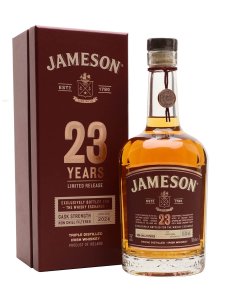
Its arrival was seemingly pre-ordained as recently a fair chunk of my life (and most of my brain) has been taken up with reading Finnegans Wake, a book that is sodden with drink and in which Jameson plays a not inconsiderable part.
Why The Wake? It started with an afternoon-long conversation in Dublin’s Palace Bar with Fionnán O’Connor and Adam Park as we were plotting out a new film. The film, a follow up to ‘The Amber Light’ (now on Disney+ and Netflix folks!) is looking at Irish whiskey within the context of a wider reawakening of interest in the country’s cultural heritage: music, food, and literature. It was inevitable that Joyce was going to be in there. The question was how?
Fionnán pointed out that the Wake is all about circularity – a rise, a fall, a rise again… and onwards as the riverruns – as is the story of Irish whiskey (well, all whisky to be fair).
It’s not about whiskey, but there again its not about anything. Rather the book is about everything – the mess and muddle of life and language. Everyone will find their own Wake emerging, their own way in. It could be cricket, Catholicism, or insect sex.
What is the Wake after all but a distillation of all language, story, and myth? Whiskey makes as much sense as anything – after all Finnegan’s corpse revived by a glass of whiskey on his face.
Poitín is in there, as is Power’s, Roe, John’s Lane and Bushmills but it is Jameson which dominates. There are 16 (often heavily disguised) mentions of it, starting on the first page with the ’peck of pa’s malt had Jhem or Shem brewed by arclight’. On page 2 there’s an account of distillation.
I found that there were points when mentally exhausted by wading through the torpid thickets of puns that there would be a sudden moment of clarity. A joke, a piece of beautiful prose, a sudden revelation of character or reference. For a second you understand – Zen-like satori.
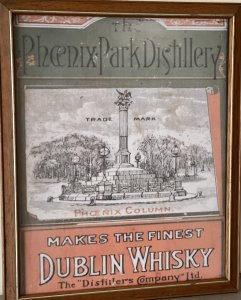
It’s the same with a glass of whisky that you’re struggling to get to terms with. The words won’t come, the flavour you’re trying to pin down remains frustratingly out of reach and then… suddenly it snaps into focus.
So, yes, whiskey is there, as is Joyce’s family’s back story. His father, John Stanislaus Joyce was an investor in the Dublin & Chapelizod distillery, where he held the position of company secretary.
HCE, the ‘hero’ of the Wake is a publican and at one point, such is the fluidity of the text, also the owner of a distillery which explodes, leaving him ‘deafadumped all his dry goods to his most favoured sinflute…weeping worrybound on his bankrump’ which echoes an explosion at Roe’s distillery and the financial implosion of the D&C in 1878. John Joyce lost his job and all his money sending the family into a spiral of poverty.
In true whiskey and Wakeian style the distillery was reborn under the ownership of DCL as Phoenix Park. It was closed in 1921, part of the firm’s scorched earth policy towards Irish whiskey. Another fall, before today’s rise, which has been led by Jameson. Now, there’s a nice circularity.
Let’s raise ‘a glass of Irish frisky (a Juan Jaimesan hastaluego).’
——————-
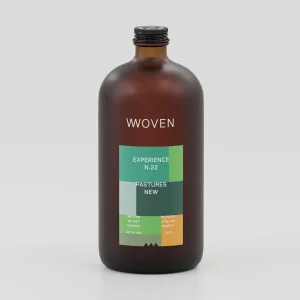
What’s In My Glass
Indy bottlers have performed a vital role in the democratising and education of Scotch whisky. While there were brands available in the 1970s when the first stirrings of single malt as a category began to form, it was firms like Gordon & MacPhail and Cadenheads who showed malt’s true diversity
Their role remains important. A focus on distilleries’ character, less in finishing, fancy secondary packaging and spurious stories – and at prices which are more sensible than most official bottlings. There is something admirably purist about their approach – the whisky itself, variety, offering a constantly changing feast for the drinker. It’s one which appeals to the true collector, the browser and the newcomer.
It’s not be an easy time for them recently. Distillers have always sold to brokers as a way of balancing their own stock levels and finances. The boost to sales during Covid however saw them shutting off the supply of many key malts. Why sell to a third party when they could make the money in-house? The result is a shrinking of what distilleries are available. There are more bottlers, but less choice.
The price of new make was rising as well – driven by the prices being offered by third-party ‘cask investment’ firms. If they were asking twice or three times the price that distillers were selling bulk new make for, then why shouldn’t the latter do the same?
The end result has been a reduced selection for indies to draw from, confusing pricing.
The indy bottler can be seen as the antithesis of the distillery bottling, but they are nore similar than you might imagine. Rather than the malt being the brand, the bottler is.
You don’t just buy a bottle of distillery X, you buy G&M’s, Adelphi’s, or Signatory’s because of trust, and also because each has its own style. The indy ‘brand’ is flavour-led: Adelphi’s love for richer, ex-sherry casks for example, Elixir’s obsession with fruit.
To succeed therefore in what is an increasingly cluttered market with new players appearing every day (some simply trying to get rid of casks they bought on spec at too high a price), the bottler’s story, becomes ever more important.
Whisky is about narrative. It encourages conversation but the narrative has to be true, coherent, interesting – and backed up with quality. How do you pick among the forest of Glentauchers? You trust the bottler’s palate.
How then to refresh the sector, find new stories, new ways to talk, and engage new drinkers? Two firms stand out: one an independent bottler, the other a blending house. Both are asking questions about flavour and serve, and rather than concentrating on the shallowing pool of Scotch, are looking outward.

The blending house is Leith-based Woven Whisky. They come at whisky not by obsessing over name, fame, cask, or finish, but by mood. After all, that is what motivates us to pick one drink over another.
Intuitively we select what we want to drink not by name, but by how we feel and also how we know that drink, or that drink in that serve, will make us feel. It matches mood, occasion, time of day or year, company. It enhances the moment. The whisky fits you, not the other way round.
This is also where blending comes in. Picking a single cask involves stepping into the whisk to focus on the intensity of that distillery’s DNA, the expression of its singularity. It encourages the extreme.
A blender does the opposite. They step back from the whisky and look at how its flavour can work in congress with others. Each part of the blend has a function: this for aroma, this for height, that for depth, this for length that for grip. Then they also know how each in combination enhances each other. Blends make sense. They are whole.
If then you are playing in a world of flavour and texture why restrict your flavour palette to one country? Hence Woven’s newest offering: Experience N.22 (49.1%) which is apparently the first ever blended English whisky. It has contributions from White Peak, Adnams, Copper Rivet, Cooper King, Fielden, and Cotswolds.
Breathe in. There’s raspberries dusted with icing sugar, a release of menthol and ripe pear. Sip. It’s rounded, mouthfilling, gentle, yet extravagant. There’s pink marshmallow, more red fruit, light chocolate, meadow hay and supple tannin and enough grunt underneath to add weight and spice. It is great blending and at £55 belting value. Have it with ice or long – I’m mixing it with InTune Pomegranate & Ginger. Go play!
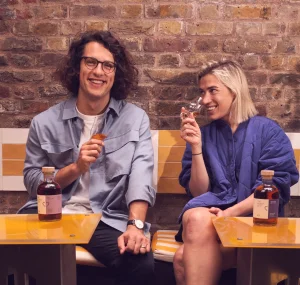
There’s links here to what Georgie Bell and husband Fabrizio Lioni are doing with The Heart Cut. If there’s a world of whisky, why not go and discover what’s out there? Also, why just bottle the same Scotch malts that everyone else is? Georgie kindly gave me five wee packs of their wares, so here goes in order of weight of whisky, not numerically or alphabetically.
A #12 Nc’nean (54%/£63) is lightly vinous with touches of a sun-filled patisserie in the morning. There’s lilac/privet blossom and a yielding palate, squishy fruits, scented lemon and light balancing acids.
#11 J.J. Corry (48%/£68) is from a mix of fortified casks, but with none of the heavy dried fruit you might expect. Instead there’s juicy fruit, pineapple, melon and drying crunch of malt, lemongrass and gets sappier with water.
#10 White Peak (55%/£59) Roasted malt, a touch of smoke, umeshu, chocolate then with water some rhubarb and custard all delivered with the distillery’s signature precision.
#15 Starward (54%/£65) is fully matured in a French oak red wine cask. Lush and thick, with cherries, damson, almond.Th palate I filled with the scents of damask roses with balancing plum skin bitterness. It’s like a ready-made Manhattan (a Melbournian?)
#7 Westward (50%/£84) A wild opening: malt, parsnip, then chicken stock, but when that quickly dissipates you’ve got ridiculously tropical fruits but also this leathery, dark fruit underpinning. Complex.
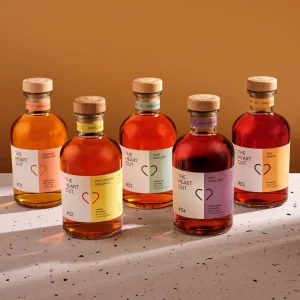
What struck me was the emergence of house style or, more accurately, a flavour preference – softly textured, ripe fruit. These weren’t whatever random casks were available, but thought through.
It’s not easy for any indy at the moment, but as ever the most interesting things are at the fringes, not in the mainstream.
———–

What’s in my ears
You know how I was talking about Woven and mood and letting the whisky fit around you? It’s the same with music. The sun is shining which means that my mind immediately turns to the music of Brazil and today that means Vinicius Cantuária’s ‘sings Antonio Carlos Jobim’. Seek it out, pop pickers!